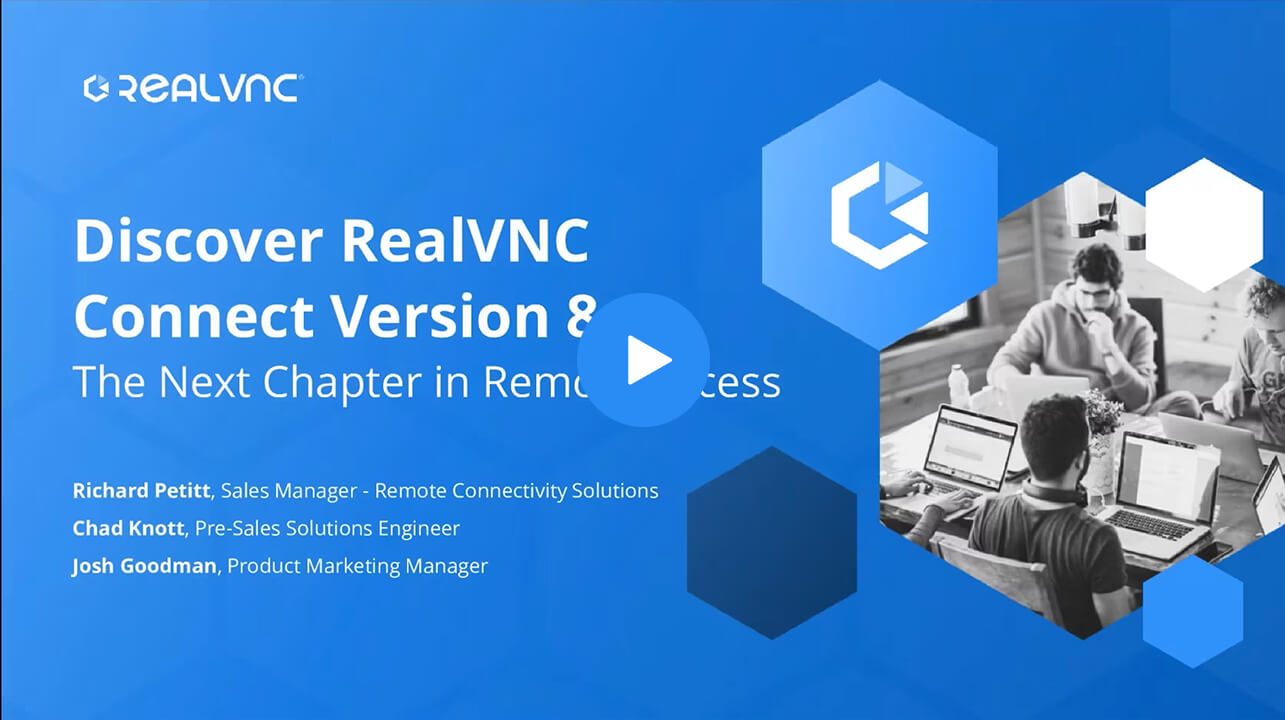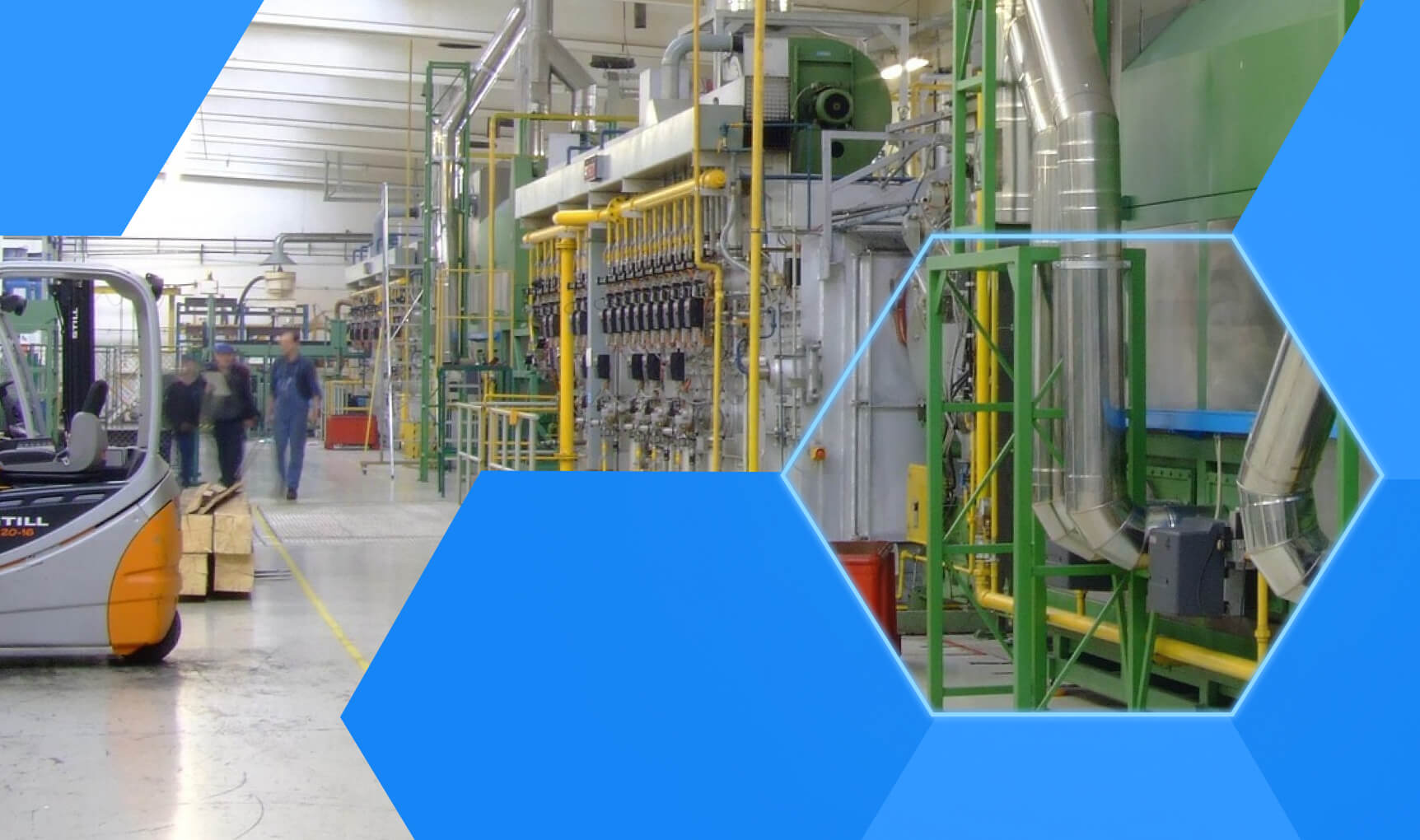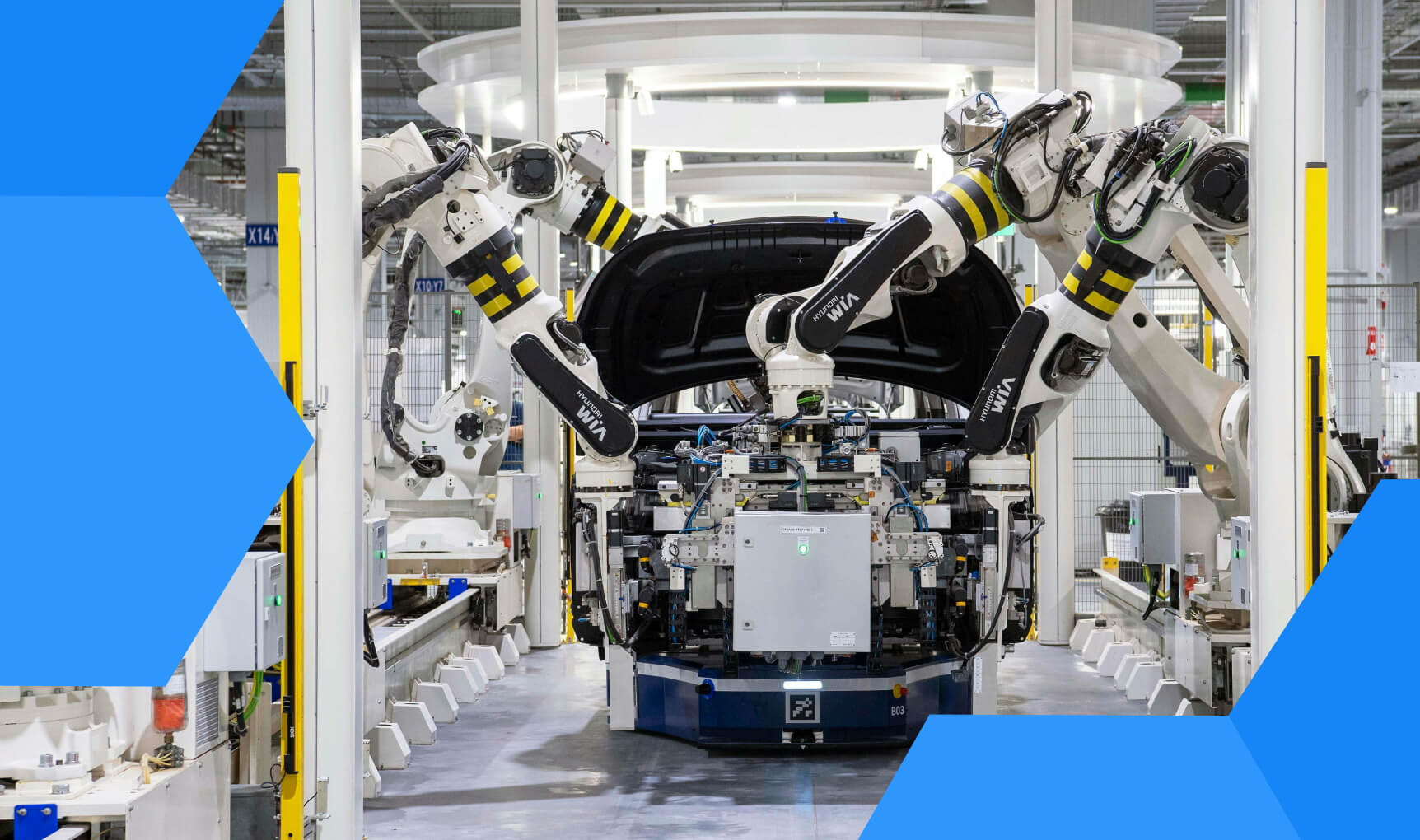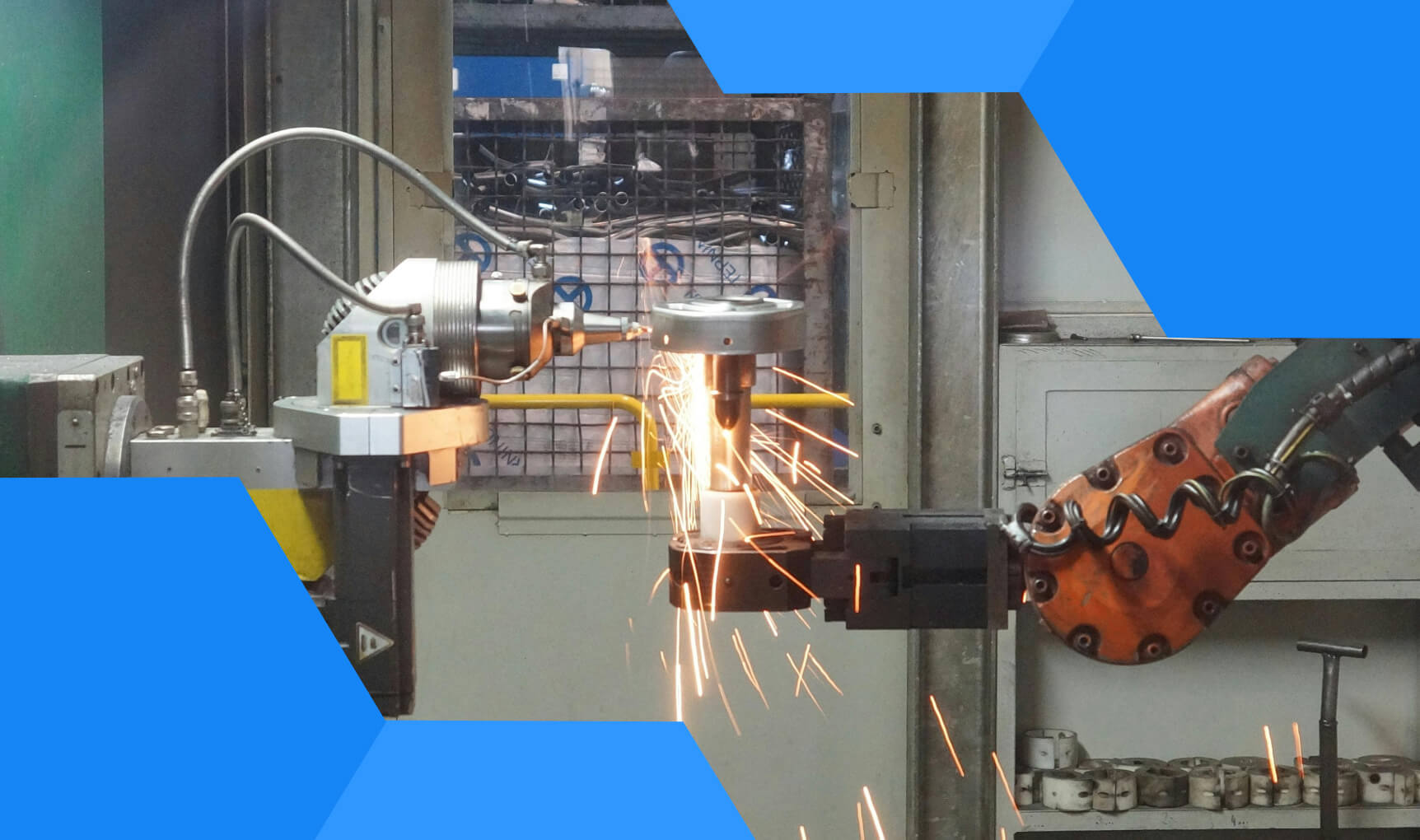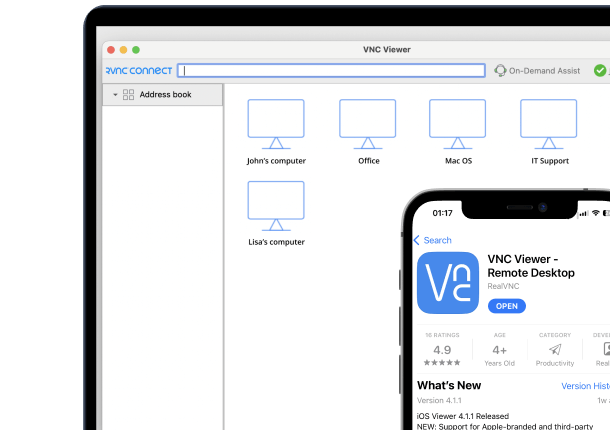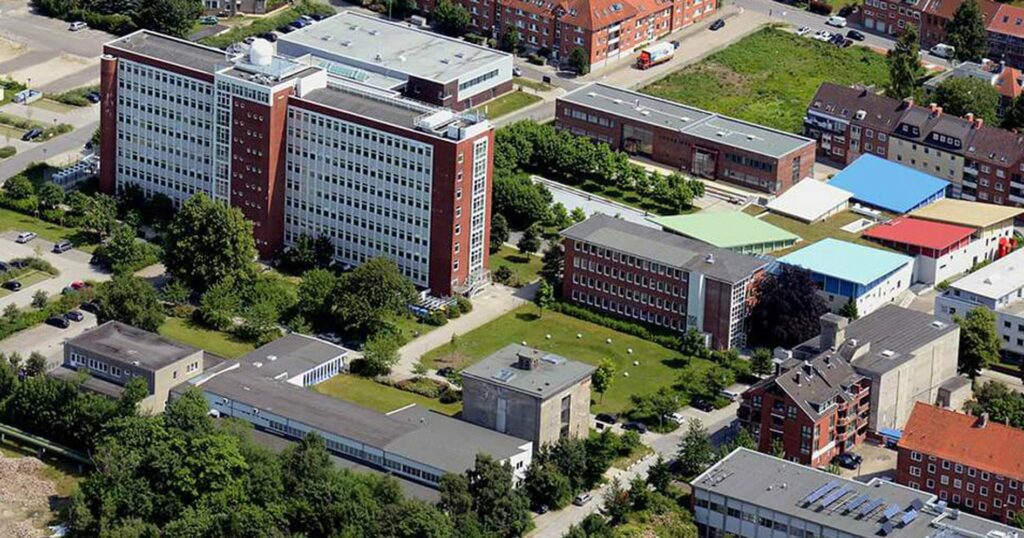Consisting of a variety of hardware and software, these systems monitor and control the physical processes that allow your business to run. Whether it’s programmable logic controllers, industrial control systems, or SCADA systems, operational technology allows you to gather the data to make more detailed, nuanced decisions about your daily operations as well as automate certain processes, vastly enhancing efficiency.
We’ll break down each relevant element, covering control systems, security concerns, how operational control differs and contrasts with information technology and how these systems can integrate with industry 4.0 concepts, aiming to offer a comprehensive view of how integrating operational technology can benefit your business.
Understanding Operational Technology (OT)
Operational Technology refers to systems made from a combination of hardware and software solutions that monitor and control physical devices, processes and infrastructure. It’s used across industries to manage, maintain, and enhance the operational efficiency and safety of their systems.
Integration with information technology in your network can lead to huge boosts to efficiency but there are also challenges when it comes to ensuring security. While these problems are not insurmountable, they are significant and worthy of careful consideration before integrating operational technology into your efforts.
Key Components of Operational Technology Systems
Operational technology is the catch-all term for several specialized systems, each with its own function.
- Industrial Control Systems (ICSs) manage complex industrial processes.
- Programmable Logic Controllers (PLCs) automate specific tasks, offering precise control over machinery.
- Distributed Control Systems (DCSs) centralize control over processes distributed across a network, making them ideal for larger-scale operations.
- Supervisory Control and Data Acquisition (SCADA) systems provide real-time monitoring and control of machinery and systems, even when geographically spread out..
Industrial Control Systems (ICS)
Perhaps the most obvious use for these systems is Industrial Control Systems (ICSs). These networks of devices, systems, and controls work in tandem to aid in the management of complex processes. They also allow detailed real-time data to be fed to operators, allowing them to make better-informed decisions, making maintaining peak operational performance that bit easier.
These networks play a vital role in monitoring, controlling, and managing industrial processes such as power generation and distribution, water treatment, and transport systems. Similar systems can be utilized to enhance operational efficiency and safety across a wide range of manufacturing and other industrial sectors.
Previously, most of these systems would be located on-site and isolated from the internet but modern systems can be far more widely distributed. These combine on-machine IoT devices and remote access control into a single unified network, centralizing control over potentially geographically distant systems. This allows greater control over the processes in question on a much larger scale than previously possible.
Security Considerations
However, thanks to being internet-connected and the critical nature of these control systems, they have become a prime target for cyber-attacks, especially in key industries like water treatment and energy. This means robust security measures and continuous monitoring for potential threats are necessary to avoid the risk of catastrophic impacts from these attacks on key infrastructure.
Distributed Control Systems (DCS)
Distributed Control Systems (DCSs) are a specialized version of Industrial Control Systems (ICSs). These differ from centralized control systems in that they consist of a whole network of controllers and sensors spread out across the process in question.
This decentralized approach allows a more flexible, and often more efficient, overview and control of complex industrial operations.
These systems are often used in industries like oil and gas, chemical processing, or power generation, where precision and control across a range of simultaneous processes is key. The real-time data provided by these systems allows operators to make quick adjustments and respond to changing conditions, maintaining operational performance and avoiding bottlenecks.
Considerations
While Distributed Control systems offer advantages in overall control and flexibility for complicated processes, they require careful consideration on both reliability and security grounds.
Maladjustment of sensors or poorly interpreted data can destroy any efficiency benefits. To this end, regular maintenance of both hardware and software is required to ensure that the systems function accurately.
Like other networked control systems, there is a risk of security breaches. Each controller and sensor is a potential entry point and could compromise the entire network, shutting down production or worse. As with any networked control device, mitigating these risks is a primary concern.
Operational Technology vs Information Technology
At their heart, Operational Technology systems are concerned with the control, monitoring, safety, and efficiency of physical processes. This contrasts with Information Technology which deals with data management and communication systems. While some aspects of operational technology systems may cross over into data management (for example, monitoring output), this is not the primary focus.
These differences are further highlighted when we consider the priorities of each type of system. While IT is largely concerned with elements such as data confidentiality and integrity and how easy it is to access, OT places priority on operational safety and maximizing the uptime of your processes as downtime can compromise both efficiency and safety.
In terms of lifecycle, operation technology systems can potentially last decades, relying on established (if occasionally outdated) technologies. IT on the other hand generally needs regular updates or even replacements to incorporate new advances in the field.
When it comes to security concerns, Information Technology is mostly at risk from data breaches compromising your business’s ability to function. Operational technology’s challenges however sit more on the side of the physical safety of your facilities as these systems are often employed to aid in hazardous industrial processes.
In the case of IT, many update processes are automated, and support from service suppliers and in-house departments is easy to come by. Operational technology can present more of a challenge as it often relies on legacy equipment, meaning that teams tasked with ensuring it stays reliable and safe will require specialist training on your particular devices.
Integration Challenges
Where the two fields collide, there is scope for significant integration between operational and information technologies. This could allow for real-time reporting and data collection or a host of other integrated processes, vastly improving the usefulness of both systems.
While many of the physical devices harnessed in OT systems may last for decades, this can present problems when integrating it with the faster-developing field of IT. There is no guarantee that modern systems will support older hardware and, even if they do, you may require bespoke solutions to get the most out of this integration, significantly adding to the complexity and cost of the system.
Likewise, integrating information and operational technologies comes with significant security challenges. While IT problems generally focus on keeping digital assets secure, operational technology tends to focus on physical safety. Exposing both means having robust cybersecurity processes in place to mitigate these risks as much as possible.
Examples of Operational Technology Systems
These systems form a critical part of the day-to-day operations in many industries, providing the framework for automation, enhancing production capabilities, and maintaining vital infrastructure.
Examples of these technologies include:
SCADAs
Supervisory Control and Data Acquisition (SCADA) systems allow the real-time gathering of data and the control of geographically dispersed assets, allowing businesses to centralize control and monitoring.
These are employed to great effect in sectors such as oil and gas production. Here they offer vital oversight of operations, supplying real-time monitoring of every aspect of production.
Smart Grids
Smart grids allow the automation of power distribution, improving efficiency and reliability. This is particularly useful in integrating renewable or other supplementary sources into a grid when they become available.
Traffic Management Systems.
Traffic management systems are a useful tool for city planners who can make great use of these technologies to aid in the flow of traffic. By allowing the easy monitoring of congestion and allowing the automation of signals, traffic can be more easily managed.
Industrial Robots
By automating repetitive tasks on an assembly line or in any number of other industrial tasks, manufacturers can benefit from increased precision, safety, productivity, and quality. From tightening bolts, through welding and painting, industrial robots offer a speedy solution to many problems and endless repeatability.
Many of these systems can be operated remotely through tools such as RealVNC Connect, drastically reducing the need for site visits and in-person interventions. A perfect example comes from Boston Valley Terra Cotta, who needed a solution to allow their team to monitor their kilns and troubleshoot problems in real-time. By using RealVNC Connect, these issues can now largely be fixed remotely, saving on travel time and vastly reducing downtime, offering significant savings.
The Role of Operational Technology in Manufacturing
Automating complex industrial processes allows companies to optimize and monitor everything from resource utilization to quality control, minimizing the risk of downtime and ensuring that production lines run as smoothly as possible.
A prime example would be the introduction of industrial robots in the car manufacturing industry. Here, the laborious process of building can be sped up without sacrificing quality and resources can be maximized through vastly reducing the risk of user error on the factory floor.
IT Integration
Blending advanced data-management systems with production means greater nuance in performance metrics and operational data, allowing decision-makers a better picture and enhancing the agility of the process as a whole. Seamless integration between data systems and the physical machinery on the shop floor allows vastly improved coordination and responsiveness. Tools like RealVNC connect can act as a bridge between these systems, for example connecting the IT and OT elements of smart grids in energy production to minimize downtime.
It’s unlikely that every part of a process will take place in a single environment, so products that can facilitate communication between Linux, Windows, and Raspberry Pi-based systems are necessary to ensure that the advantages can be realized with minimal interference between physical machinery and digital assets.
Another major advantage of blending OT and IT comes from the chance to embed greater cybersecurity into your operational assets. By following IT best practices, the threat of cyber-attacks on critical machines can be greatly lessened.
Additionally, this integrated approach means that your operational technology can be updated to include practices like predictive maintenance. By harnessing data analytics, it’s possible to anticipate failures before they happen and schedule maintenance when most convenient. This reduces unplanned downtime, increases the lifespan of machinery and ensures that productivity remains high.
Industry 4.0 and the Industrial Internet of Things (IIoT)
Industry 4.0, also sometimes referred to as the ‘fourth industrial revolution’, is the term used to encompass the myriad changes in manufacturing technology that are currently shaping the industrial landscape. The integration of automation and data exchange lies squarely at the heart of these shifts where the Industrial Internet of Things (IIoT) allows connected devices and sensors on machinery to collect data and automatically control processes.
This allows real-time data gathering which leads to more efficient and precise control, allowing operators to make the choices that best fit the nuance of the situation. This, in turn, leads to improved product quality, greater production levels and reduced operational costs.
As combined Operational and Information technology solutions become the norm, new options open up for manufacturers and other industrial sectors all the time.
Security Concerns
However, these revolutionary new practices are not without their drawbacks. The integration of IT and OT networks can create new vulnerabilities that attackers could exploit. It is therefore essential that the best practices of the IT world are adopted, minimizing the risk to both sensitive data and industrial machinery from bad actors and ensuring the safe and reliable operation of key infrastructure.
Operational Technology Security and Challenges
Breaches in security can lead to impacts that range from inconvenient downtime to outright disasters, risking the physical safety of your team, infrastructure and the general public.
Common challenges include managing older systems which may rely on outdated technologies and issues that arise from merging OT and IT systems. In the case of systems that require continuous operation, finding the opportunity to apply patches and updates promptly can prove problematic and increase the time when you are potentially exposed.
With that in mind, there are certain steps that any industrial setting should take when considering how best to deploy operational technology and integrate it with their IT systems,
Risk Assessment
This should encompass any potential vulnerabilities and the worst-case scenario should they come under attack. This will allow you to prioritize your security efforts in the most effective places.
Network Segmentation
Introducing segmentation reduces the ‘attack surface’ and is particularly useful for protecting key systems by isolating them from the network. Tools such as RealVNC Connect offer segmentation and firewall configurations which can be particularly helpful in managing legacy machinery.
Defence-in-Depth
A layered approach to cybersecurity vastly decreases the likelihood of any given attack penetrating and causing damage.
Secure Legacy Systems
Ensure that all systems are patched and updated to the latest versions. It’s also worth employing compensating controls such as regular password changes, multi-factor authentication (MFA), device identification through RSA keys, and intrusion detection systems can all help mitigate risks.
Training
Operational Technology-specific security training for personnel who will be operating these systems, as well as your IT department, will enhance their awareness of potential threats as well as offer them vital skills.
Products such as RealVNC Connect can also aid in your operational technology’s security through tools like end-to-end encryption (AES-256) and TLS protocols to secure remote sessions like SCADAs or PLCs. Compliance with NIST CSF PR.AC-3 guidelines for access control and features such as automated session logging and audit trials mean you can rest assured that your systems are as safe as possible.
Best Practices for OT Implementation
Harnessing Operational technology systems requires meticulous planning to ensure both the security and reliability of key infrastructure. Here are some of the things to consider when implementing your own systems:
- Conduct a Thorough Risk Assessment: The first step towards implementation is undertaking a comprehensive risk assessment. This should cover any potential security vulnerabilities and the risks that may arise. This allows you to direct security efforts most efficiently.
- Implement a Defense-in-Depth Approach: Multiple layers of security controls, including things like firewalls, intrusion detection systems, and robust access controls dramatically reduce the risk from attack.
- Use Secure Communication Protocols: Ensure that any data transmitted between OT devices and systems is protected by using secure communication protocols, such as encryption and secure authentication.
- Implement Regular Software Updates and Patches: Regularly update and patch OT systems to protect against known vulnerabilities wherever possible. Keeping software up-to-date is vital for maintaining security.
- Provide Training and Awareness: There’s no substitute for a team who knows their business. Training personnel on security best practices and the importance of OT security helps to develop a security-conscious culture.
- Monitor and Analyze OT Network Traffic: Continuously monitoring and analyzing network traffic helps to detect and respond to potential security threats. Advanced monitoring tools and techniques can help to identify anomalies and prevent cyberattacks.
- Implement Incident Response Planning: When disaster does strike, having a detailed indecent response plan can aid in the quick resumption of service, cutting downtime and mitigating the impact of cyberattacks.
Final Words
In answering the question “What is operational technology?” We hope we have offered an appreciation of its critical place in the modern industrial landscape. While harnessing the latest developments in the field certainly presents its challenges, not least in keeping systems secure and managing the interface between old and new technologies, the benefits in terms of enhanced efficiency for not only manufacturing but all kinds of industrial endeavors.
While security remains a pivotal concern, with the right strategies and tools like RealVNC Control, embracing the intersection of OT and IT can bring strengthened industrial operations to almost any business.
FAQs
What is operational technology?
Operational technology is hardware and software used to monitor and control equipment and processes.
What are examples of operational technology?
Examples include SCADA systems for automation, smart grids in utilities, traffic management systems, or industrial robots in manufacturing.
What is operational technology cyber security?
The process of protecting OT systems from cyber threats, ensuring safety and reliability.
What’s the difference between IT and OT?
OT focuses on controlling physical systems and processes, prioritizing safety and uptime, while IT manages data and communication.
What is technology operations?
Technology operations are the processes and systems involved in managing and maintaining hardware and software that control industrial operations and physical infrastructure.
